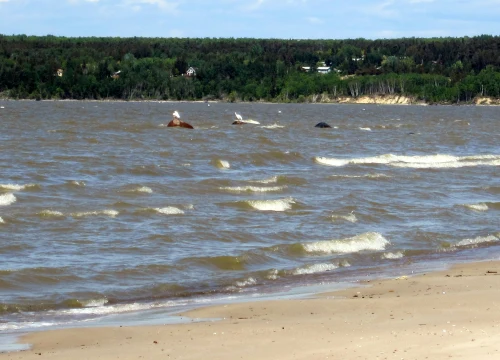The Manitoba government recently opened a consultation on proposed nutrient targets for concentrations of phosphorus and nitrogen getting into Lake Winnipeg.The following are my comments on the proposed regulations. The most important points are that targets are good but must be reported on annually and must include enforcement penalties where necessary. Real change is only going to occur with political will to back it up.

The proposed nutrient targets for Lake Winnipeg are an important step in addressing the eutrophication challenges which have overwhelmed the lake for more than 2 decades now. Establishing targets can be a very useful tool in promoting action to decrease the phosphorus and nitrogen loads to the lake if they are accompanied by the political will to fuel real change.
The targets can be a good metric to measure annual change against. The nutrient loads to the lake should be made public on an annual basis and should be broken out to specific areas. For real change to occur there must be attention to areas on the landscape that are sources of phosphorus and nitrogen. If increases or decreases occur, taking into account the hydrology of that year, a closer examination of what is happening on the landscape can offer important information about nutrient losses. Decreasing nutrient inputs from non-point sources on the landscape is a significant challenge but since this is a measurable problem, it is possible to diagnose where the nutrients are coming from and then, target remedial action to those areas.
Hog Watch Manitoba has proposed that comprehensive data collection should be implemented to test water samples from ditches, creeks and streams running alongside manure spread fields, in order to ascertain the concentration of phosphorus and nitrogen that is escaping from the soil. On average the number of pigs per farm in Manitoba is 5536 more than double Quebec’s average, even though Quebec produces the most pigs per year in Canada( Canadian Pork Council Statistics). This is significant because it has implications for the amount of manure to be spread in relative proximity to the farm. The greater the number of pigs, the greater the amount of manure to be disposed of.
The blue-green algae (cyanobacteria) that are causing concerns are both a nuisance and a significant threat to human and animal health. In recent years there has been more acknowledgement from the scientific community of toxins that are present in some algal blooms including BMAA and microcystin, to name a couple. Microcystin is produced by microcystis which is not a nitrogen fixer, and lends weight to the need to target nitrogen as well as phosphorus. In Manitoba we have not yet paid as much attention to the human health effects from algal toxins as is being done in other jurisdictions, Florida for example. However, the health impacts will increase if we do not take action now.
Regarding the target levels for phosphorus and nitrogen, the suggested targets for nitrogen in the north basin of the lake, 0.75mg/L, seem too high. Each year there are already very extensive algal blooms in the north basin while the nitrogen concentration has averaged less than the suggested target since 2012. Whether the suggested target levels for both nutrients are low enough is questionable but the targets can be changed if the algal blooms continue to be significant even with lower concentrations of nutrients entering the lake each year.
In conclusion, the establishment of targets for nutrient concentrations in Lake Winnipeg is an important, necessary step towards returning the lake to a healthier state but only if there is real political will to institute the changes in human actions that will be required. This means transparency and accountability every year from agricultural operations, industries and municipal sewage plants with appropriate penalties where required.

Leave a comment